Lancelot Speed was a coastal painter and a British illustrator of books in the Victorian era, usually of a fantastical or romantic nature. He is probably most well known for his illustrations for Andrew Lang's fairy story books. Speed is credited as the designer of the 1916 silent film version of the novel She: A History of Adventure by H. Rider Haggard, which he illustrated.

Sir Joseph Wilson Swan FRS was an English physicist, chemist, and inventor. He is known as an independent early developer of a successful incandescent light bulb, and is the person responsible for developing and supplying the first incandescent lights used to illuminate homes and public buildings, including the Savoy Theatre, London, in 1881.

Edward Somerset, 2nd Marquess of Worcester, styled Lord Herbert of Raglan from 1628 to 1644, was an English nobleman involved in royalist politics, and an inventor.

Francis Bedford was one of England's most prominent landscape photographers and the first to accompany a royal tour.
Events from the year 1957 in art.
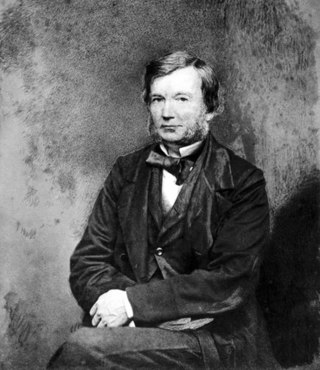
Bennet Woodcroft FRS was an English textile manufacturer, industrial archaeologist, pioneer of marine propulsion, a leading figure in patent reform and the first clerk to the commissioners of patents.

Henry Alfred Pegram was a British sculptor and exponent of the New Sculpture movement.
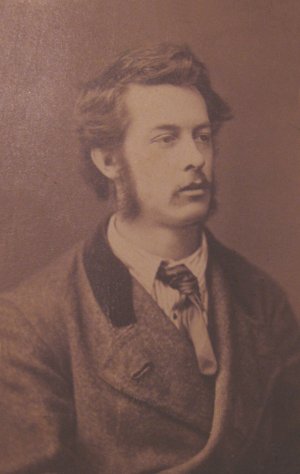
William Edward Frank Britten was a British painter and illustrator. It is known that he worked in London, England starting in 1873 and that he stayed in the city until at least 1890. Britten's work ranged in style from to traditional Victorian to Pre-Raphaelite, and his artistic medium ranged from paintings to book illustrations. His paintings have mostly been praised by critics with his illustrations having been treated as either neutral or favourable by reviewers.

John Phillips was an English artist and illustrator. He is perhaps best known as a satirical etcher.
Frederick Settle Barff was an English chemist, ecclesiastical decorator, and stained glass manufacturer, much interested in theology.

Joseph Austin Benwell (1816–1886) was an English artist, engraver and illustrator. He was primarily an artist in the 'orientalist' style. Many of his paintings and engravings were based on his travels in the Near and Middle East, China and India, often featuring camel caravans, Arab scenes and depictions of Indian life.

Hugh Thomson was an Irish Illustrator born at Coleraine near Derry. He is best known for his pen-and-ink illustrations of works by authors such as Jane Austen, Charles Dickens, and J. M. Barrie. Thomson inaugurated the Cranford School of illustration with the publication of the 1891 Macmillan reissue of Mrs. Gaskell's Cranford.
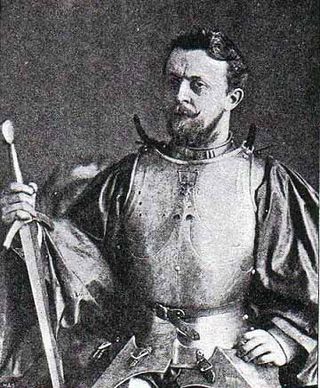
Paul Hardy, was an English illustrator, best known for his regular illustrations in The Strand Magazine, his painting of Canterbury Pilgrims (1903) and for his drawings associated with the serials of the writer Samuel Walkey (1871–1953). Paul was the eldest child of David and Emily Hardy. Paul's father was also an artist, as was his grandfather James Hardy senior and his uncles James Hardy junior and Heywood Hardy, all from an old Yorkshire family. All Paul's siblings, Norman, Evelyn and Dorothy Hardy, were illustrators.
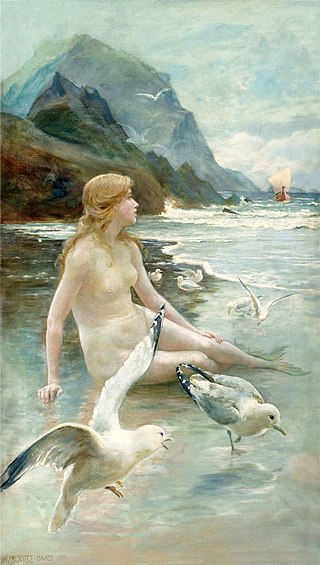
Norman Prescott-Davies (1862–1915) was an English painter and illustrator.

Arthur John Balliol Salmon was a British artist particularly noted for his illustrations and his work in pencil, chalk and pastels. He was one of the twenty leading illustrators selected by Percy V. Bradshaw for inclusion in his Art of the Illustrator.
The West London School of Art founded in either 1861 or 1862 as the Marylebone and West London School of Art, was an educational establishment in London, England. The school worked with the Science and Art Department in South Kensington and offered lessons including architectural and life drawing.

Atherton M. Curtis was an American art collector and a writer from Brooklyn, New York City, who settled permanently in Paris, France, in 1903. He was also an author of introduction, art historian and publisher, who donated numerous archaeological items to the Louvre and other museums. He was also a principal benefactor of the Humane Society, and is recorded as being a strong supporter for the abolition of vivisection.
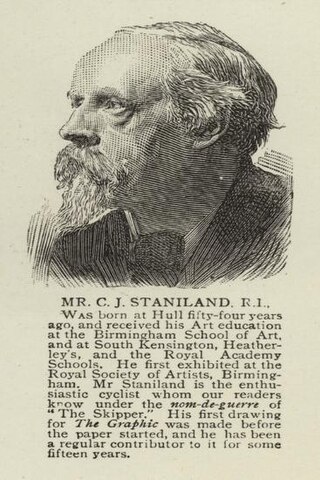
Charles Joseph Staniland was a prolific British genre, historical, and marine painter and a leading Social Realist illustrator. He was a mainstay of the Illustrated London News and The Graphic in the 1870s and 1880s.
William Hatherell was a British painter and illustrator who worked in the genres including historical painting, Arthurian legend, and sentimentalism.
Edward Henry Price (1822–1898) was an English cleric and educator. He founded two successful schools, Mostyn House School which existed until 2010, and The Philberds which was taken over to house prisoners of war during World War I, and demolished after the end of the war.